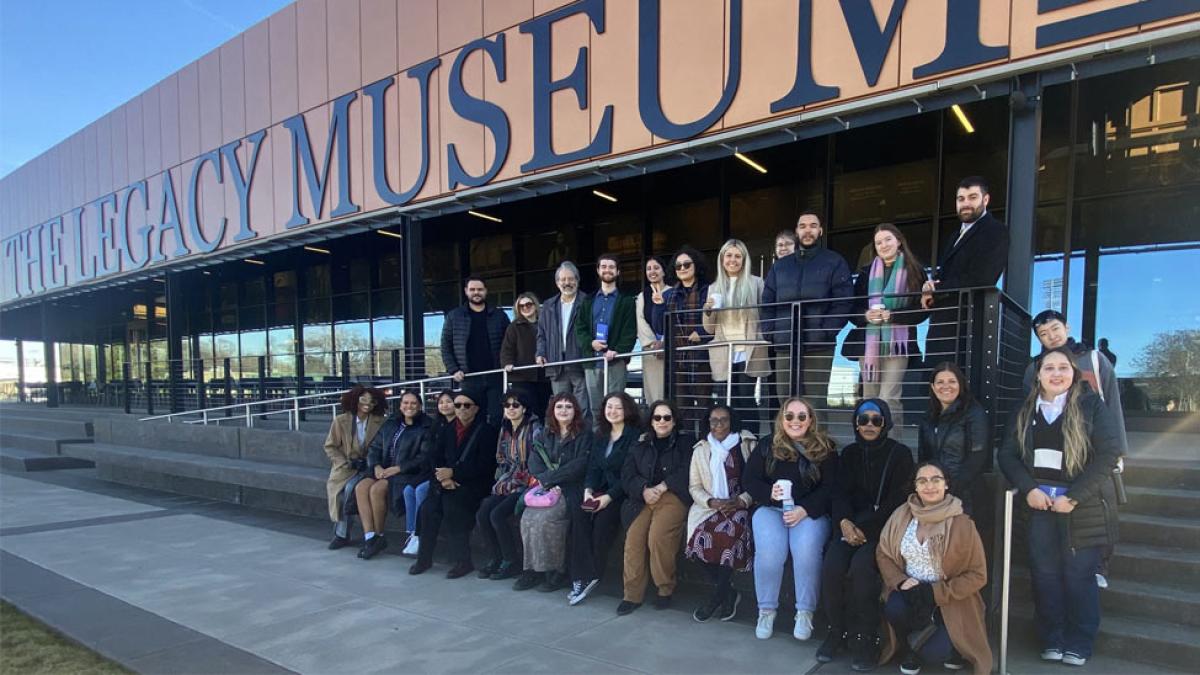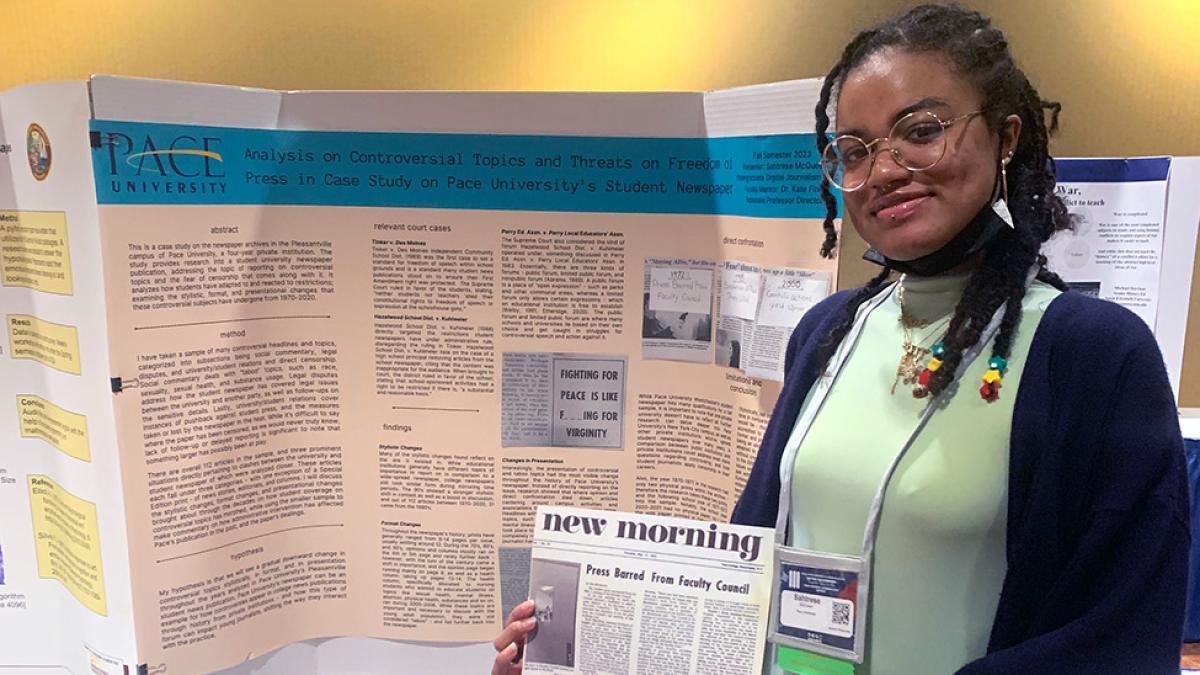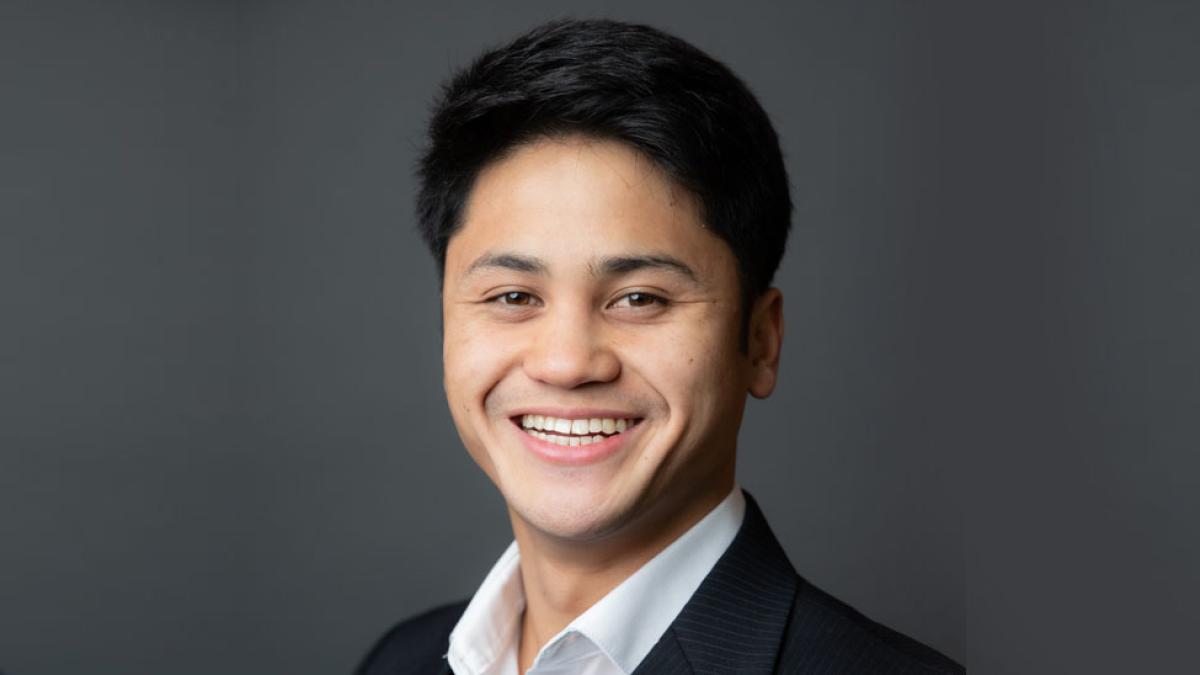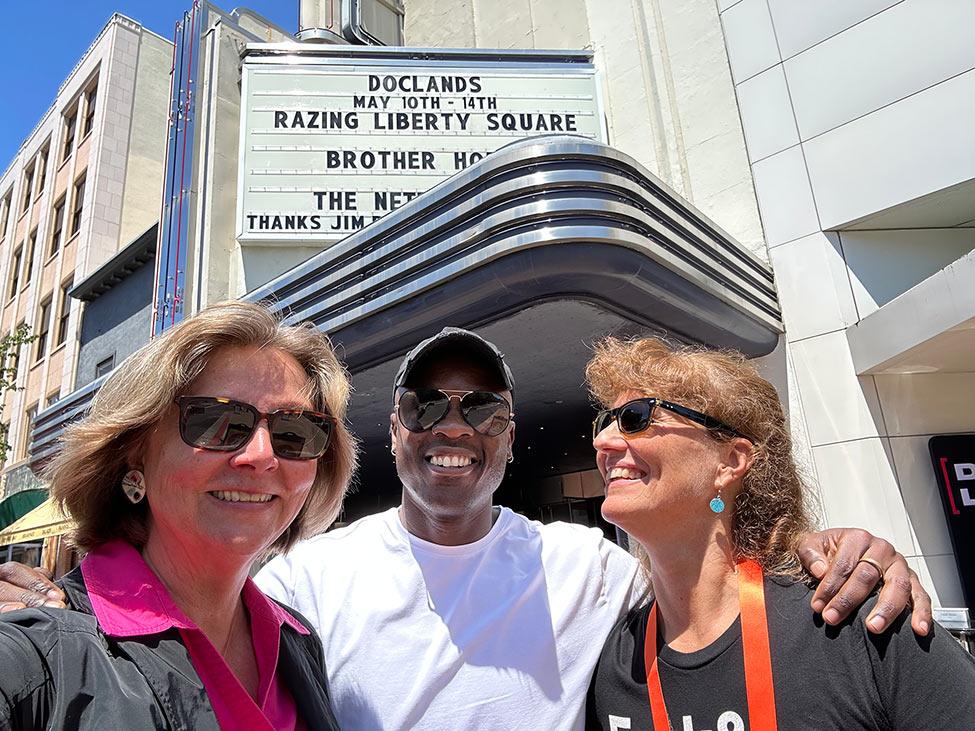
Raising Questions about Razing Liberty Square
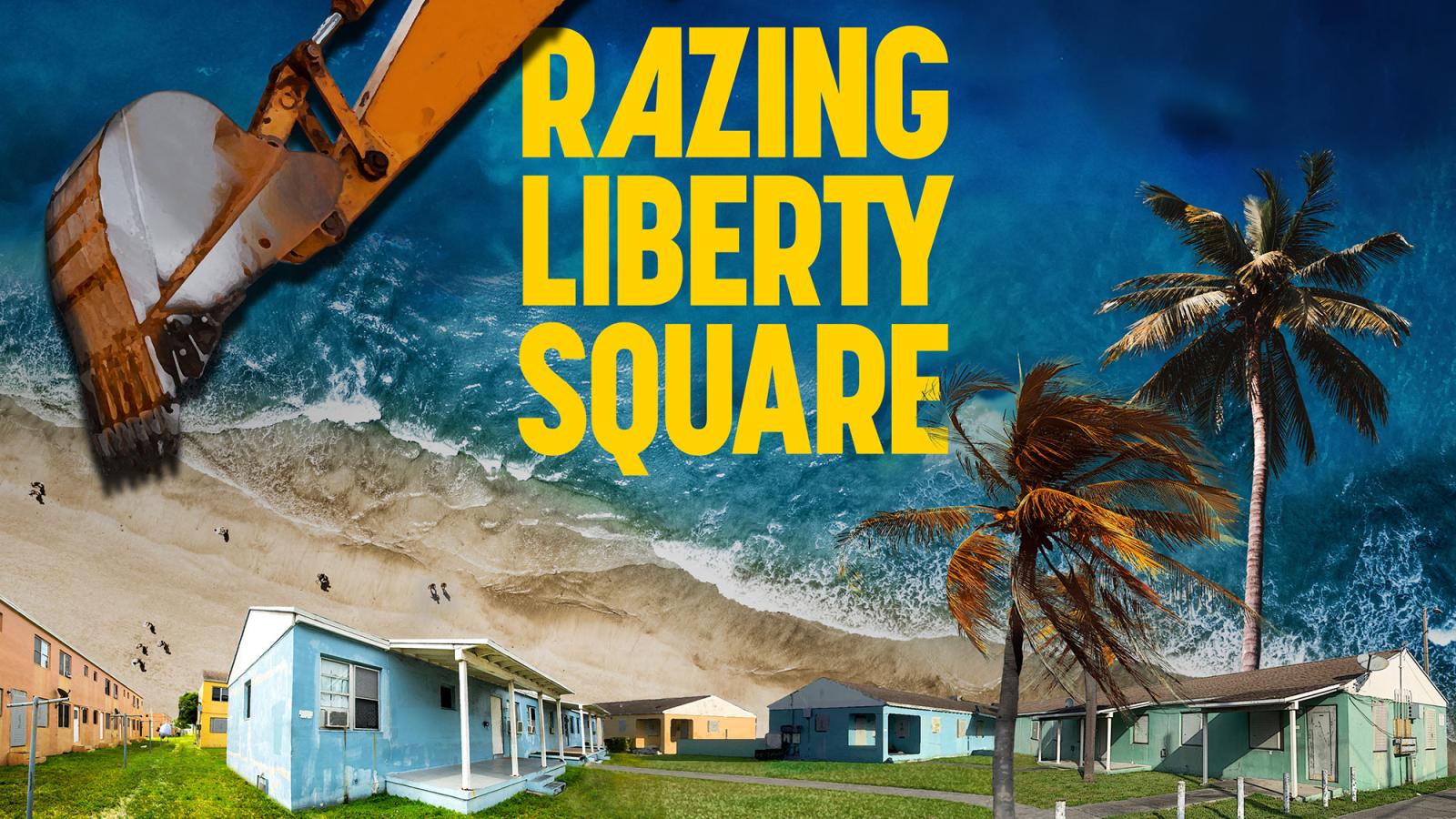
Corinna Sager is a producer, speaker, and educator. She’s produced everything from international events to feature films and has been teaching at Pace since the introduction of Dyson’s Media Communications and Visual Arts program in 2010.

And for the past four years, she’s worked as a producer on a groundbreaking documentary about how climate gentrification is affecting a historically Black public housing project in Miami, Florida. After years of filming, editing, and fighting to ensure the story was told, the feature-length documentary Razing Liberty Square premiered on PBS on January 29, 2024.
Her experience on Razing Liberty Square, as a producer in general, and as an educator all follow a common theme: Ask questions.
“I always ask questions, I'm always curious,” Sager says.
Her curiosity was certainly piqued when her close friend and frequent collaborator Katja Esson reached out to ask for help on this Miami-based project. Both Sager and Esson hail from and met in Hamburg, Germany, and both have lived in Miami. Ironically, Esson moved to Miami at Sager’s suggestion, who attended the University of Miami and thought it would be a great fit for Esson’s film and theater aspirations.
I always ask questions, I'm always curious.
Esson learned about the plans to raze and rebuild Liberty Square in 2017 and soon picked her camera to follow the process. “You know, as a European, we always think ‘why is America constantly tearing things down?’” Sager explains. But Esson had no idea just how complicated the story was about to get as she began filming.
Liberty Square is an area of public housing in the Miami neighborhood Liberty City. It’s the first public housing project of its kind in the American South and for years was separated by a wall, physically segregating the predominantly Black community from the surrounding areas. Integration triggered a “white flight” from the surrounding area by anti-integration white citizens, and Miami began to invest less in the Liberty City area as a whole. This, coupled with the development of more public housing nearby, caused Liberty City, and especially Liberty Square, to become an area of concentrated poverty and crime.
In recent years, the city of Miami took an interest in Liberty Square. The urban development company Related Urban unveiled plans to revitalize the area, bringing in national chains, community centers, and brand new residences to create a mixed-income community.
The cause for the sudden interest in reinvesting in this neglected neighborhood? Climate change. Liberty City sits on a ridge 12 feet above sea level. As such, it is not subjected to the same amount of flooding and natural disasters as other parts of Miami. It’s now prime real estate.
Related Urban promised the residents of Liberty Square they would not be displaced, and that impact would be minimal. Some residents of Liberty Square were excited for the chance to live in brand new spaces in an up-and-coming neighborhood. But many others expressed suspicion and skepticism; they had lived through past revitalization projects in which similar promises were made and broken.
As a producer, you have to know and understand everything.
As Katja Esson documented these stories, each new layer brought more questions. What is climate gentrification? Could the development company be telling the truth? Would this usher in a new era of prosperity for the residents of Liberty Square? Or would this be a case of history repeating itself?
As the story became more complex by the day, Esson reached out to Sager to see if she would be interested in lending a hand as another producer. Sager joined the production in January 2020.
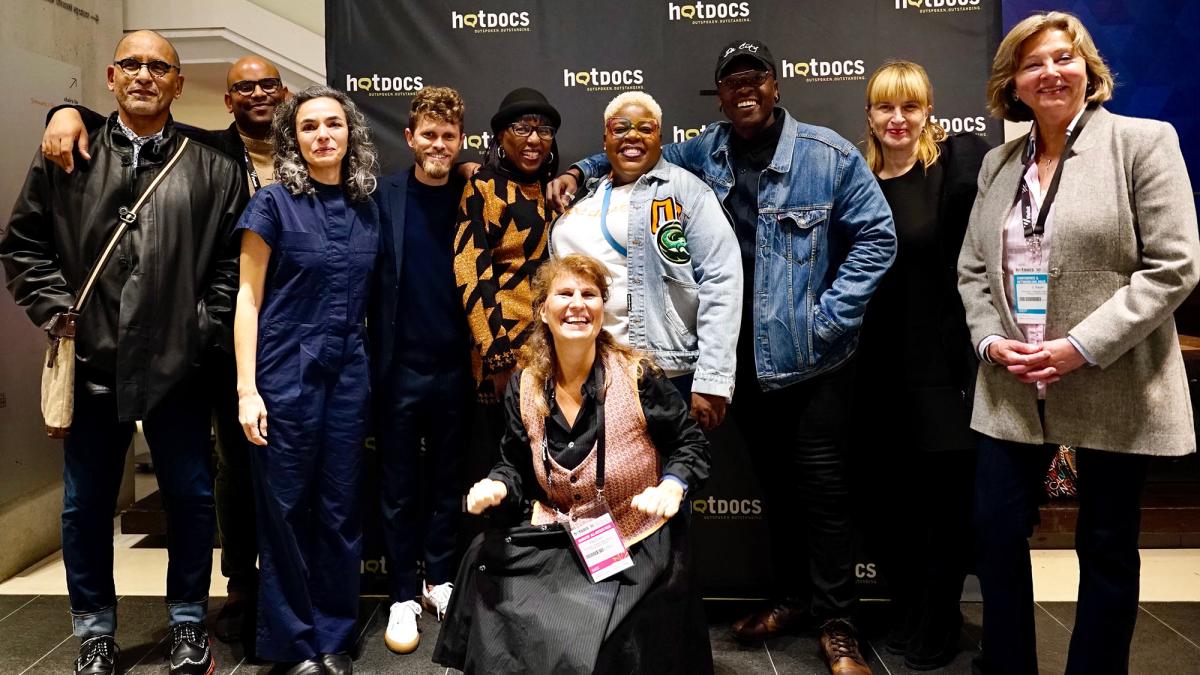
“It was a lot of learning,” Sager explains. “We were dealing with gentrification, with people being moved out, with Section 8 housing vouchers.” Not to mention the stress that the looming pandemic would put not only on the unfolding situation, but production itself.
They were also chasing questions. Not just their own, but the questions from the people they were following. What was Related Urban actually promising? Were these options actually just another form of displacement? “We had to edit for almost three years, because we were really trying to figure out a way to make these different subject matters intersect and make people get it.”
And throughout all of this, Sager was teaching at Pace.
During the final stretch of post-production for Razing Liberty Square, Sager was teaching her class Producing: Script to Schedule, and she was able to bring in everything she was experiencing to her students. “That part was easy, because I was living it,” she said. “My goal is always to treat my students like young professionals, and not like students.”
My goal is always to treat my students like young professionals, and not like students.
Sager invited Esson and others involved in the project, as well as other colleagues, to speak with her class and share their expertise. Students received a more holistic perspective as they learned from directors, post-production professionals, editors, and more who could speak to different aspects of production. “As a producer, you have to know and understand everything,” Sager explains. “You need to understand your team when they say something. If you don’t, you have to ask questions.”
These students, who were preparing a pitch of their own project for finals, were also able to review some of the professional pitches Sager and the Razing Liberty Square producers submitted to entities such as the Sundance Institute and PBS. Students could follow along and see how the approach changed over time, how it was adapted for different stakeholders, and how their pitches evolved with the project.
“Every production is a learning process,” Sager explains. “You have to be open to learning, you have to be open to asking questions. And you have to never be afraid to ask questions. You do not look stupid. On the contrary, if you ask questions, it shows that you're interested. It shows that you want to learn, and you really want to get an understanding.”
It’s not just about asking questions and being willing to learn, it’s also about excellent communications skills.
But just like with Razing Liberty Square, asking questions is just the beginning.
“It’s not just about asking questions and being willing to learn, it’s also about excellent communications skills,” Sager says. Across all of her classes—from public speaking to international communications to producing—Sager impresses upon her students the importance of learning to communicate effectively to work as a team and bring understanding.
Razing Liberty Square serves as perfect evidence of these principles. It began with a question: what is happening to Liberty Square? After years of filming, navigating competing interests, and delving into complex, multi-layered issues, curiosity was only the starting point. It took the ability to work across competing interests, nuanced storylines, and multi-faceted issues to bring the story to life.
Answer the question of what becomes Liberty Square in the new documentary, Razing Liberty Square on PBS or streaming online.
More from Pace Now
Twenty students from Pace’s Haub School of Law and Dyson College embarked on a profound interdisciplinary field study to Alabama alongside the Equal Justice Initiative, looking into history to understand its impact on the present and actively seek ways to eliminate injustice and inequality.
Sahtrese McQueen, a Digital Journalism major at Pace, presented research at the MSCHE conference that explored how Pace's student newspaper dealt with controversial issues over different decades.
Towards the end of his army contract, Joseph Ingles '25 was searching for a business school that would provide him with a smooth transition from his logistics-focused role. After a strong recommendation from a lieutenant, Joseph landed at Lubin, where he has since gained real-world marketing experience and made it his mission to shed light on the importance of mental health.
